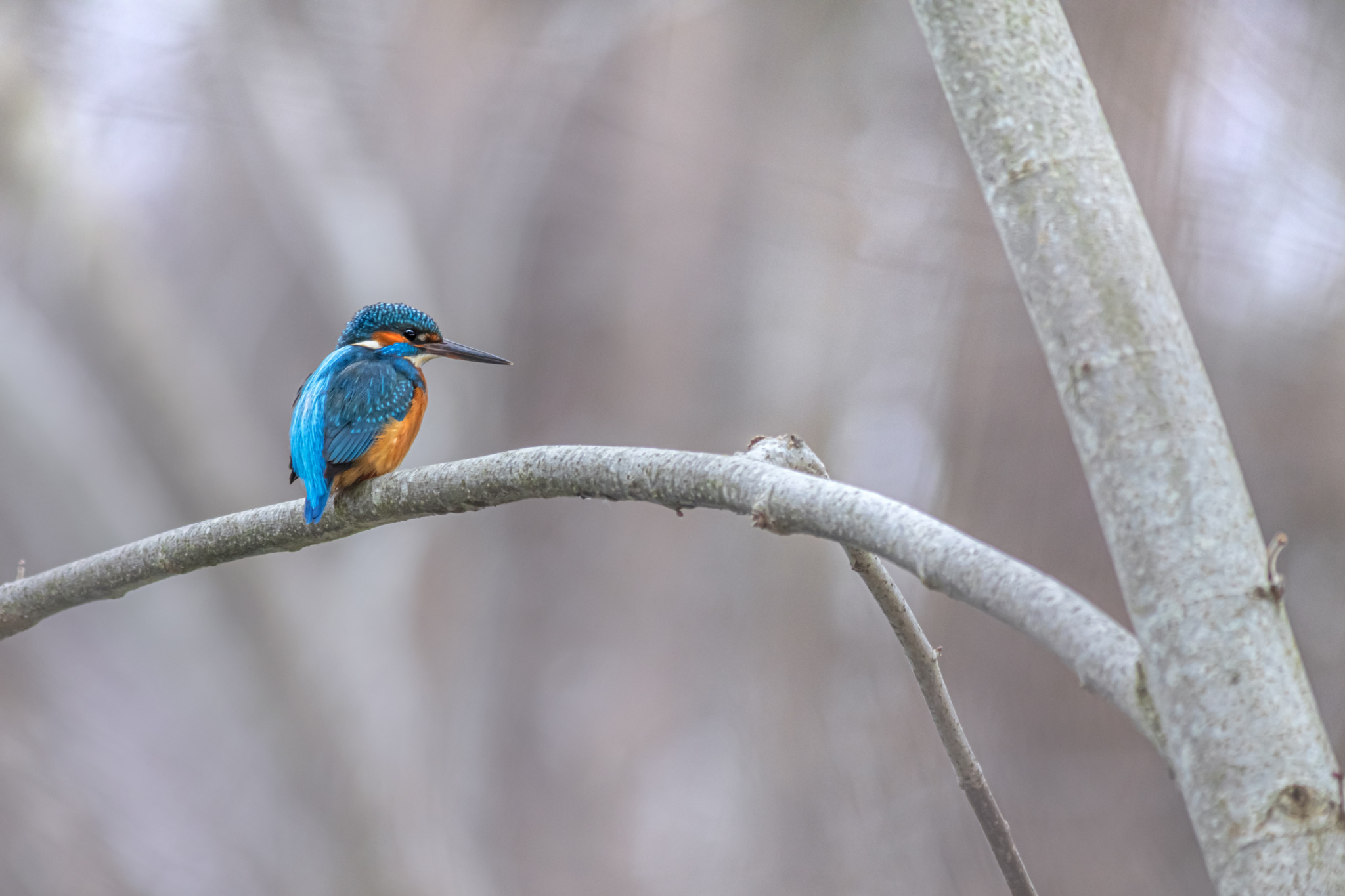Common Kingfisher (Alcedo atthis)
The Common Kingfisher is a strikingly colorful bird known for its brilliant blue and orange plumage, rapid flight, and exceptional fishing skills. Found across Europe, Asia, and North Africa, it thrives in freshwater habitats where it hunts small fish and aquatic insects.
Physical Description
- Size: 16–17 cm (6.3–6.7 inches)
- Wingspan: 24–26 cm (9.4–10.2 inches)
- Weight: 30–40 grams
- Plumage:
- Iridescent blue-green back and wings
- Bright orange underparts
- White throat and neck patch
- Long, sharp black beak, ideal for catching fish
- Sexes look similar, but females have a reddish-orange lower mandible.
Habitat
- Found across Europe, Asia, and North Africa.
- Prefers slow-moving or still freshwater bodies, such as:
- Rivers, streams, lakes, and ponds
- Marshes and estuaries
- Often seen perched on branches overhanging water, scanning for prey.
Behavior & Diet
- Feeding:
- Dives headfirst into water to catch small fish, insects, and crustaceans.
- Uses its long, pointed beak to spear prey.
- Swallows fish headfirst to prevent scales from catching in its throat.
- Flight:
- Fast and low over the water, with rapid wingbeats.
- Vocalization:
- Sharp, high-pitched “chee-chee” call, often heard in flight.
Breeding & Nesting
- Breeding Season: March–August
- Nests:
- Dug into riverbanks or sandbanks, forming a tunnel 30–90 cm long.
- Both parents excavate the tunnel.
- Eggs:
- 5–7 small white eggs.
- Incubation:
- 19–21 days, with both parents sharing duties.
- Fledging:
- Chicks leave the nest in 24–27 days but remain dependent for a short period.
Threats & Conservation
- Threats:
- Habitat destruction due to pollution, drainage, and riverbank erosion.
- Cold winters can reduce fish availability, leading to population declines.
- Disturbance from human activity, including boating and fishing.
- Conservation Status:
- Least Concern (LC) on the IUCN Red List.
- Protected in many countries, with efforts to maintain clean waterways.
Interesting Facts
- Kingfishers have specialized vision to see clearly underwater, adjusting for refraction.
- They beat their freshly caught fish against a perch before swallowing to stun the prey.
- A single kingfisher can eat up to 15 fish per day.
- Their feathers appear blue due to structural coloration, not pigment.
Summary
The Common Kingfisher (Alcedo atthis) is a dazzling, fast-flying bird that thrives in freshwater habitats. Known for its precision fishing skills and bright plumage, it is a favorite among birdwatchers. Protecting clean waterways is crucial for its survival.
Visited 324 times, 8 visit(s) today
Views: 872
Subscribe to the newsletter:
